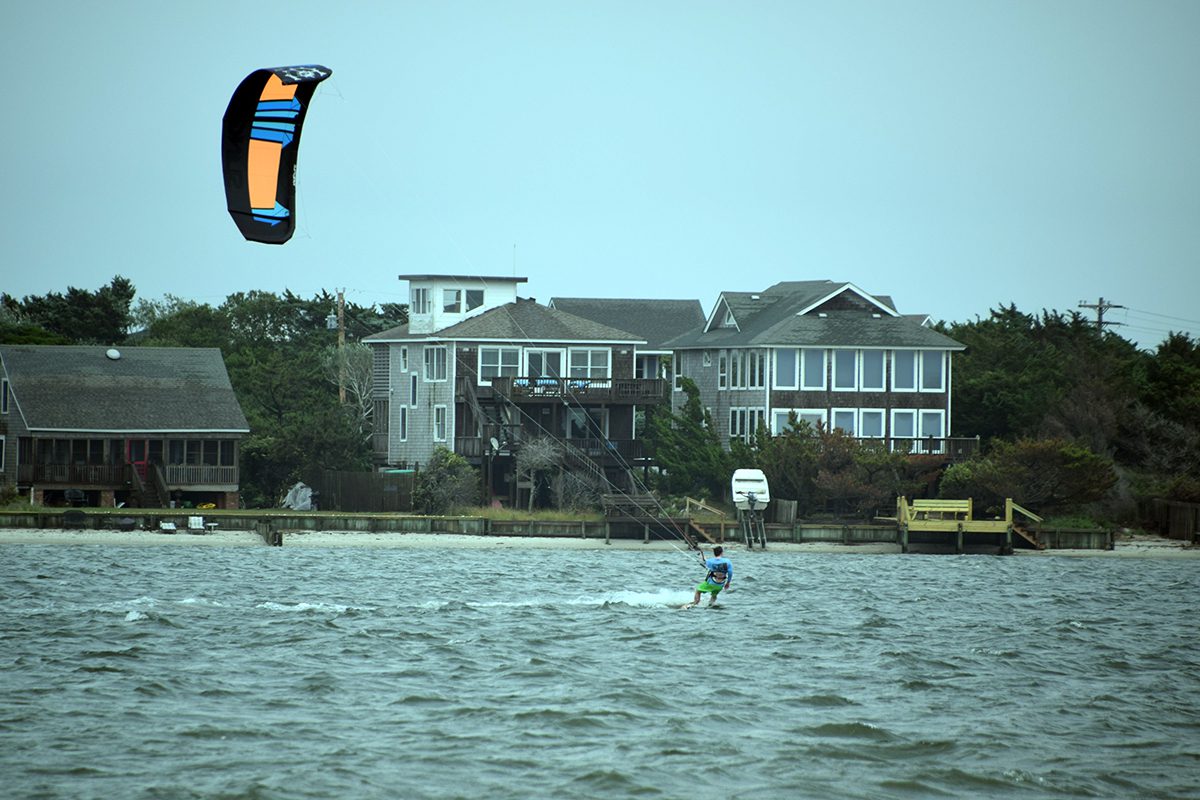
With its international connections, centuries of history and unique attractions, Ocracoke has earned its reputation as a star of the Outer Banks.
Accessible only by ferry or light aircraft, Ocracoke is one of the few inhabited island destinations in the state without a highway connection to the mainland. But those who take the state-run ferry from Cedar Island, Hatteras or Swan Quarter to the isolated village are in for a delight.
Supporter Spotlight
Ocracoke is one of North Carolina’s more stable barrier islands. Ocracoke Inlet, at its western end, is the only inlet in the state that has existed since the 16th century. This stability has made Ocracoke a center of marine transportation since the centuries before European arrival. Native Americans used the island as a base for fishing, hunting and navigation.
Beginning in the 17th century, English ship pilots made their home there. One of the earliest settlements on the Outer Banks, Pilot Town was first settled around 1715, and was located where Ocracoke Village is now, according to “The Outer Banks of North Carolina, 1584-1958” by David Stick. Those pilots were predominately white in early years, but by the 19th century there were a considerable number of African Americans, both free and enslaved, piloting ships from Ocracoke.
Ocracoke remained sparsely populated throughout the colonial and early republic period. But its navigational status gave it outsized importance relative to its small population. To that end, the island is the home of one of North Carolina’s oldest lighthouses. Built in 1823, the Ocracoke Lighthouse still stands on the western section of the island.
Ocracoke’s isolation makes it special. It led to the development of islanders’ distinctive brogue, often called “High Tider,” or “Hoi Toider,” that linguists have studied extensively for decades. But isolation also exposed the island to enemy naval attack.

The most notable invasion occurred during the War of 1812, when Ocracoke and Portsmouth were taken over by the forces of British Admiral Sir George Cockburn. The invasion was embarrassing for North Carolina, whose militia took several days to reach the island. After the war, the temporary loss of Ocracoke prompted the state’s government to invest in internal improvements.
Supporter Spotlight
The island was once again vulnerable to invasion during the Civil War. It was the site of Fort Ocracoke, the home of hundreds of Confederate forces in the early months of the war. The fort was taken by the Union army without a struggle following the fall of nearby Hatteras Island.

The capture was the beginning of a shift in the island’s focus. It still hosted pilots, but in the late 19th century, the island also became a center for tourism and the location of a village which remains to this day.
The island never lost its connection to naval endeavors, however. During World War II, it was the site of a naval base and close to shipping lanes where many German U-boats hunted British and American ships.
One of these ships, the British HMT Bedfordshire, sank off the coast after a torpedo attack. Four bodies washed up on the shore at Ocracoke. The cemetery where these men are buried is still leased by the British government, one of the few of its kind in the United States.

Over the past 50 years, Ocracoke has experienced both growth and resilience in the face of harsh coastal conditions and historic storms. Hurricane Dorian in 2019 slammed the island with a more-than 7-foot surging wall of water. All aspects of life here were affected. Scars still linger.
Now Ocracoke’s tourist village, shops, motels are thriving again, and there are services including a dog kennel.
The island has more than a dozen restaurants within the mile or so between the ferry terminal and the Ocracoke Airport. In addition to the three vehicular ferries that visit the island, the North Carolina Department of Transportation launched the Ocracoke Express passenger ferry in 2019.
Though there is significant development on the western side of Ocracoke, the eastern side is part of Cape Hatteras National Seashore and is home to horses, nesting sea turtles, and hundreds of species of birds.

Ocracoke has received numerous plaudits over the past two decades, as well.
In 2020, it was named by HGTV as one of the 22 best islands to visit in the United States, with the network describing it as “a peaceful escape to travelers willing to make the trip.”
Ocracoke’s quiet allure brings visitors of varied interests. Andrea Tolson, administrator of the Ocracoke Preservation Society, said she believes that beaches, fishing and history are the main draws for tourists.
Many of the businesses and sources of employment on the island have connections to the historic sites here, from the lighthouse and the museum to a coffee shop located in a historic house, she explained.
The island has successfully kept out chain stores and large-scale commercial businesses, Tolson said. Those wouldn’t be in keeping with the way of life here.
“Things are very self-sustained out here,” Tolson added, “and that’s the way we like it.”
While facing increased threats from climate change and hurricanes, the island has found balance in its unique ecosystem amid the demands of a tourist economy. The snowball’s chance of N.C. Highway 12 ever connecting the island to the mainland with a bridge would likely overwhelm the village and the island’s natural areas with tourists.
“I don’t think most of the community here would like that. It would change the whole face of this island,” Tolson said of a bridge.








